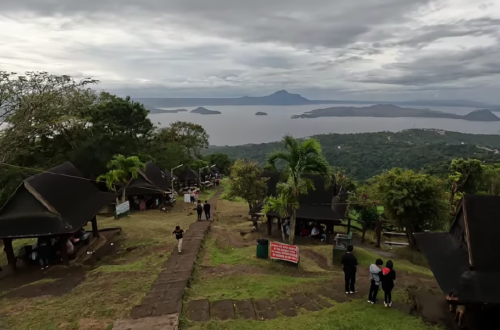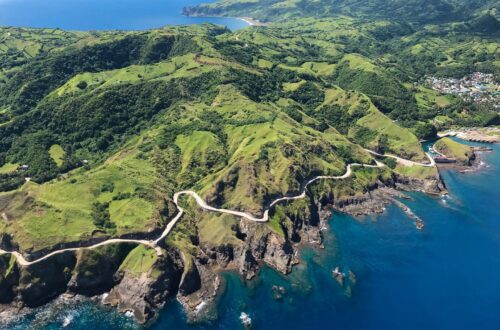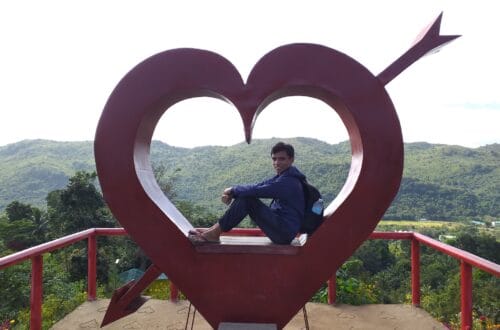
Camp John Hay
Introduction
Camp John Hay is one of the most popular tourist destinations in Baguio City. It is located on the southeastern side of Baguio City and is twelve minutes away from the Baguio City Central Business District (CBD). Camp John Hay has a size of 695 hectares and is well-known for its wide array of recreational activities such as trekking, zip-lining, paintballing, horseback riding, go-kart racing, golfing, wall climbing, and walking along the vast-open places surrounded by pine trees.
According to its history, the 213 hectares Camp John Hay was planned and developed as a military base and recreational place for the United States armed forces in the year 1903. It was after United States President Theodore Roosevelt signed a presidential order that the American serviceman should be given a place to refuge from the relatively hotter temperature in the lowlands during the American colonial period in the Philippines. Camp John Hay was named after the former United States Secretary of State named John Milton Hay.
During the second world war, Japanese warplanes dropped seventy-two bombs over the main gate of the camp in December 1941. Afterward, Camp John Hay was utilized by the Japanese imperial army as a prison camp for captive American and British soldiers. Also, it was used as their military command post when General Tomoyuki Yamashita headed toward Northern Luzon at the end of the Japanese occupation in the Philippines. Then on September 3, 1945, Japanese General Tomoyuki Yamashita officially signed the surrender paper to the Allied forces at Ambassador’s Residence inside Camp John Hay.
In the year 1955, Camp John Hay was transformed into John Hay Air Base, and over the years it remained under the jurisdiction of the Americans until it was officially turned over to the Philippine government in the year 1991 after the senators decided to end years of foreign military presence in the Philippines leading to the expiration of the United States-Philippines Bases Agreement. Afterward, the Philippine government decided to retain a portion of the historical core property which includes the Bell Amphitheater, Commander’s Cottage, and Butterfly Sanctuary.
Then from the year 1991 up to 1997, Filipinos ran the former United States Air Force recreational facility for the first time as a resort, operating all the popular and familiar spots as close to the originals as possible. Also, Camp John Hay became a human resource development hub, and forest watershed reservation in the region. It was operated by a private developer on a long-term lease. As a result, Camp John Hay contains hotels, ecotourism spots, a shopping venue, picnic grounds, a golf course, a trade and cultural center, dining venues, lodging and residential facilities, private vacation houses, The Forest Lodge, and the very sophisticated hotel named The Manor at Camp John Hay. For this reason, as the years passed by, it became a major tourist attraction in Baguio City as it’s filled with different attractions and is the ideal place to learn more about history.
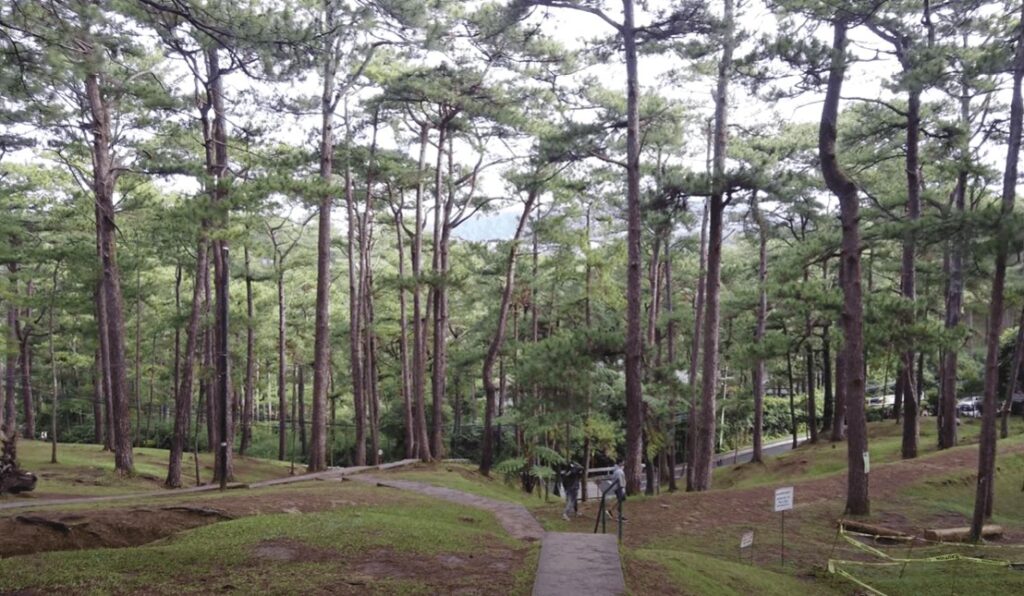
Name: Camp John Hay
Location: Loakan Road, Baguio City, Benguet, Philippines
Features: fantastic recreational activity and a wonderful view of pine trees
My trip to Camp John Hay
After a hassle-free jeepney commute, I arrived at Camp John Hay around 8 am. Then as I walk in the Scout Hill section, I can find some picnic tables on the vast picnic grounds, a Go Kart area, some cafeterias, mini golf, and the Butterfly Sanctuary. The medium-sized Butterfly Sanctuary is built around the bronze statue of a little mermaid and colorful butterflies can be seen flickering around the garden contained by a light green mesh. Also, I learned the life cycle of butterflies as I meander around the different types of butterflies.
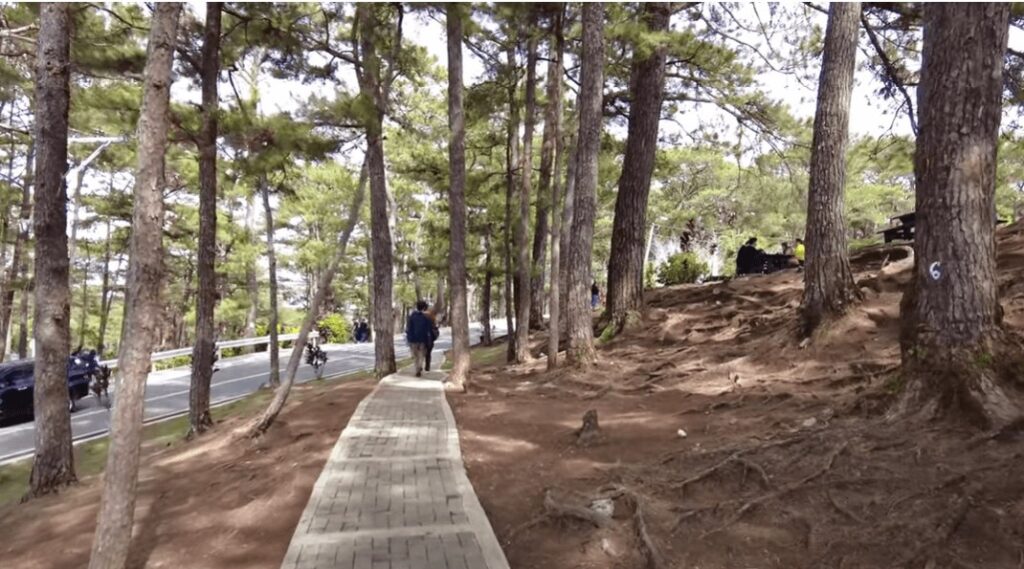
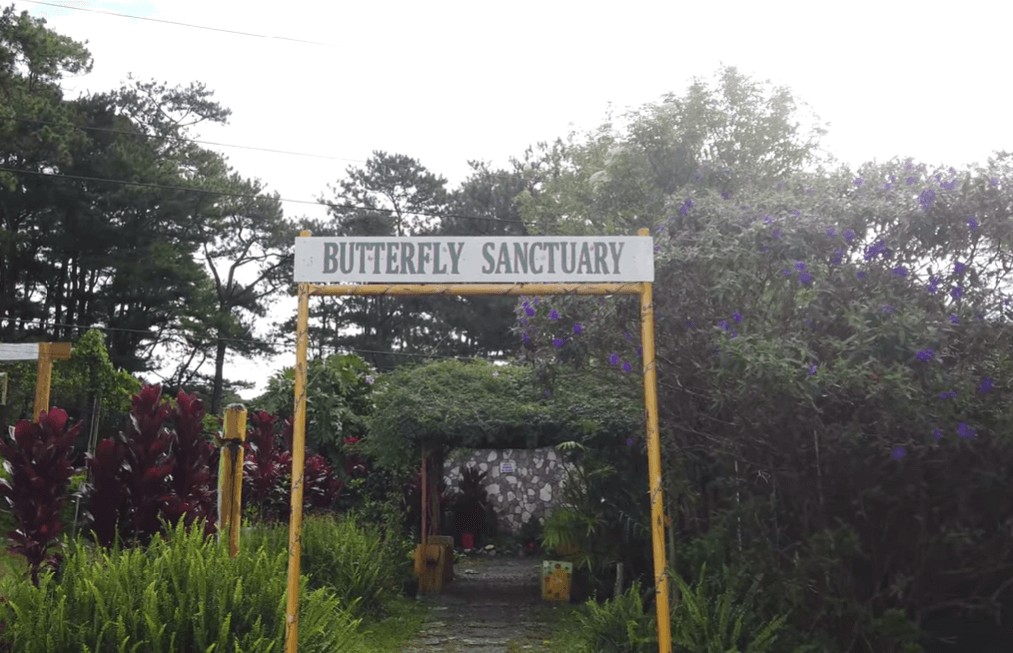
On the left side of Butterfly Sanctuary, there is an exits/entrances to the Forest Bathing Trail. So I decided to go inside the trail and from the moment I started trekking, I feel fully immersed in the towering pine trees and I feel like I’m in a different place or country. The rolling hills and lush greenery provided a perfect backdrop while I’m enjoying this place.
Then it came to my mind that the practice of forest bathing or shinrin-yoku in Japanese terms has good health and wellness benefits such as it can improve feelings of happiness, can lower heart rate as well as blood pressure and it can improve our immune system to fight diseases. When I finish trekking, I told myself that this place is so nice for destressing and staying away from the noisy world.
Later, I go to the historical core and I paid 75 pesos to go inside. The historical core is composed of the Cemetery of Negativism, secret garden, totem pole, bell amphitheater, and bell house. Inside the secret garden and history trail, I can see the installed markers that highlighted Camp John Hay’s history.
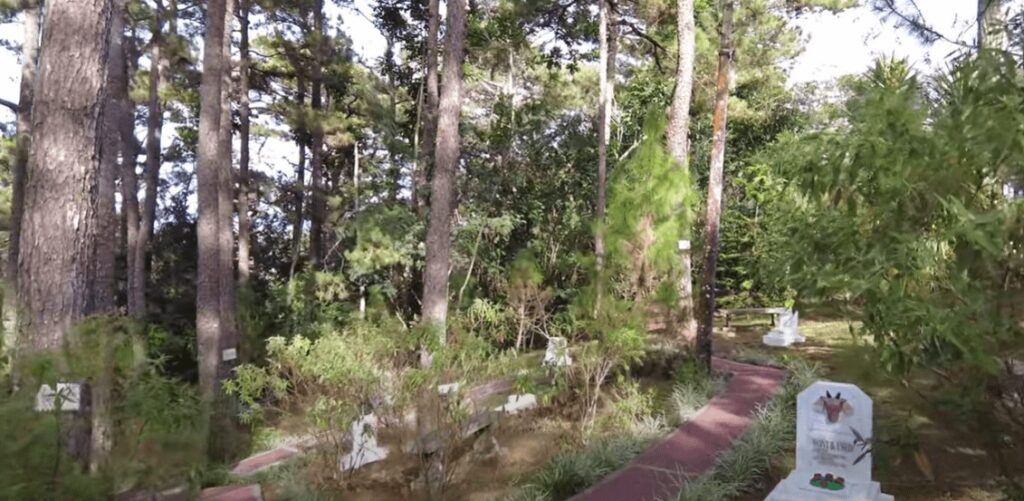
Then I decided to explore the cemetery of negativism or the lost cemetery in a hill and I found out that there are no actual graves here. I see a small statue that has lettering that reads “Negativism is a man’s greatest self-imposed infliction, his most limiting factor, his heaviest burden. No more, for here is buried the world’s negativism for all time. Those who rest here have died not in vain but for you a stern reminder”. Then it came to my mind that once I enter this place I must put away all the negative thoughts I have and once I leave this place I have all the positive mindset in life. Without a doubt, it serves as a symbolic burial site for negativism which include negative thoughts, attitude, and emotions.
Afterward, I went to the totem pole which is a wood sculpture of human heads that features the leaders or historical figures who support the development of Baguio City and Camp John Hay. A few minutes later I went to the bell house but unfortunately, it was closed to visitors nonetheless, I have a picturesque view of pine forests. Then as I walk on the path to the secret garden, I noticed there were so many different kinds of plants and flowers which is so relaxing to see. From my point of view, the secret garden is a perfect place to have some alone and quiet time because of the freshness of the air and the peaceful atmosphere.
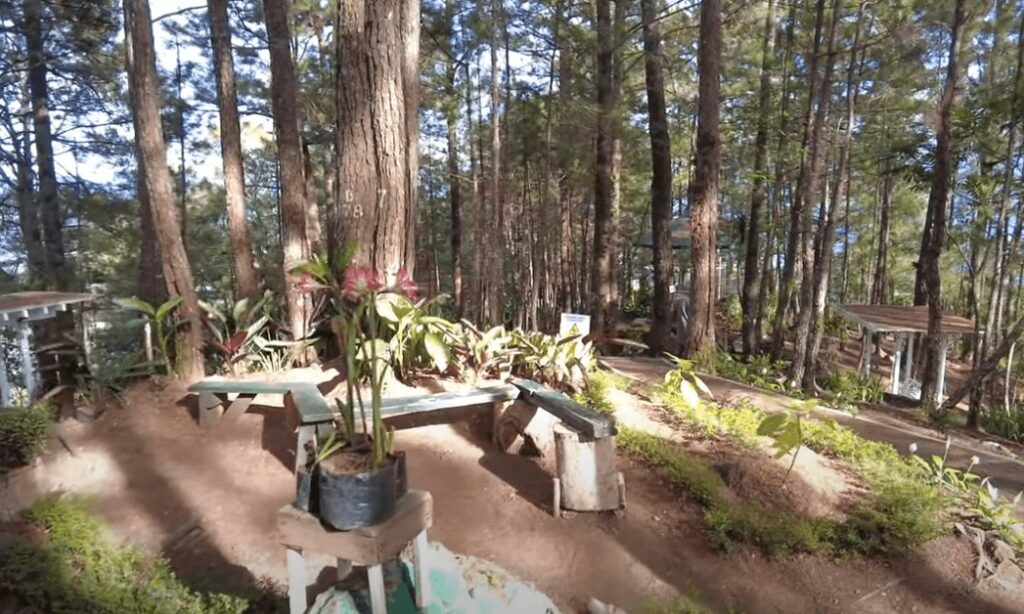
Then I went inside the liberty loop and I can find here a replica of the Statue of Liberty which is the endearing symbol of the American heritage. Also, I can find a small wishing well where visitors can make a wish come true. After that, I went to the Bell Amphitheater which is a common place for photoshoots and wedding ceremonies. It was built shortly after the establishment of Baguio City by Major General J. Franklin Bell. The Bell Amphitheater looks like an Italian garden style and is very akin to the Colosseum that stood the test of time and nature and it contains many colorful flowers.
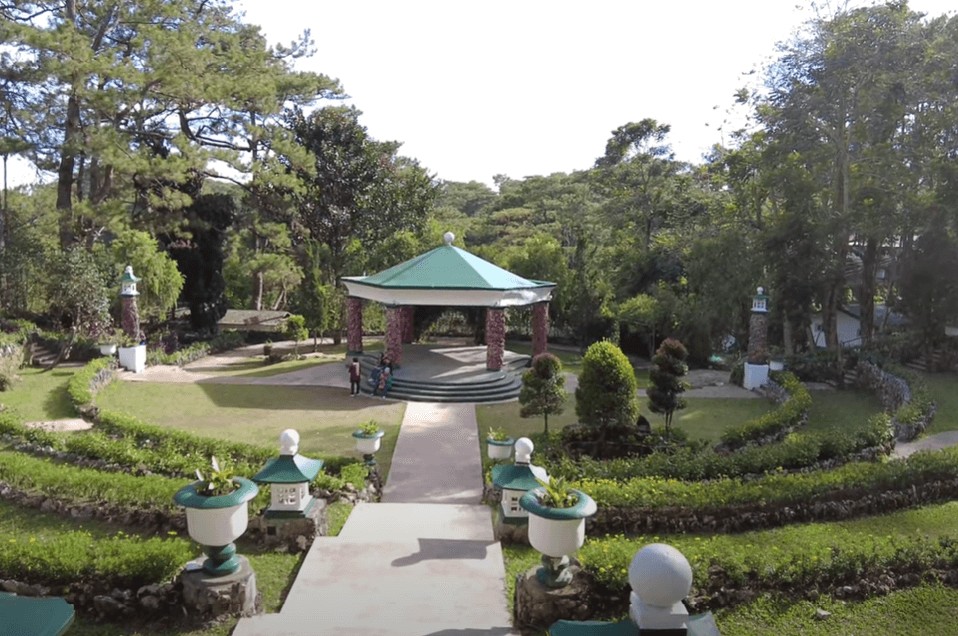
The Bell Amphitheater measures 300 feet in diameter and it can accommodate approximately a thousand people. The dry stone walls of the amphitheater were built by Igorot craftsmen. The hexagonal gazebo found in the middle is made of solid concrete which has a size of 29 feet across and has perfect acoustics at the center of the multi-terrace garden. As I strolled through the pathways, the surrounding greenery provided a soothing backdrop for peaceful contemplation. To be honest, it felt as if time stood still, allowing me to temporarily detach from the outside world and find sympathy in the natural splendor around me.
Anyway, as I continue to explore Camp John Hay, I saw a bazaar where visitors can buy bread and pastries, different kinds of t-shirts, and alluring canvas paintings. They also offer an all-day Filipino breakfast and rice meal for an affordable amount. Then I decided to try horseback riding just beside the Filling Station and I feel the essential joy of being with horses because it brings us in contact with the rare elements of life like grace, beauty, spirit, and freedom. Also, the place is so relaxing and the weather is so cold and I love every minute of it.
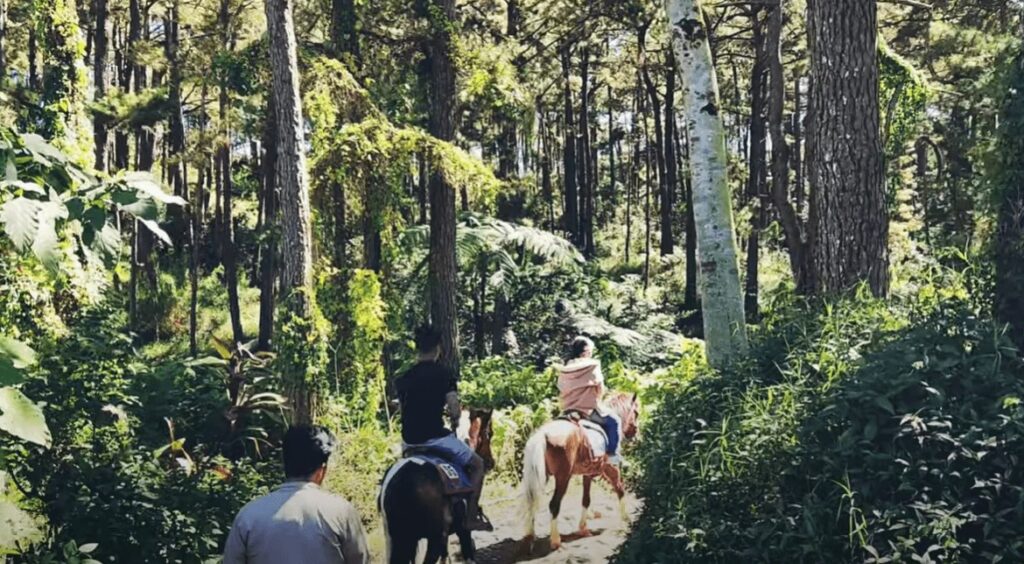
Without a doubt, Baguio is the only city in the Philippines that makes me feel as if I was in a different country. Its atmosphere and the vibes are so totally different from the rest of the country. I’m so happy that I decided to visit this kind of place and I had such a great time. It’s absolutely beautiful and it’s one of the nicest places in Baguio City. It was my first time here at Camp John Hay and I was super amazed. Anyway, I have my super late lunch at the Phantom’s Grill cafeteria and I tried their best-selling Pork Sinigang (Ilocano Style) and Bicol Express. On the whole, my trip to Camp John Hay is worth it and I will come back to this place if permitted.
How to Go to Camp John Hay
From the Scout Barrio jeepney terminal in Perfecto Street near Igorot Garden and Burnham Park, ride a jeep and tell the driver to alight you at the Gate 1 entrance (Loakan Road) to Camp John Hay. The jeepney fare is 10 pesos. Note: the jeepney route will circle Harrison Road and will pass the road just below the SM City Baguio and eventually it will pass the bus terminal of Victory Liner and later the Camp John Hay.
Reminders and Tips:
- There is 75 pesos entrance fee at the historical core of Camp John Hay which includes a visit to the Cemetery of Negativism, Bell Amphitheater, Bell House, totem pole, and secret garden.
- The horseback riding at Camp John Hay is 300 pesos for a thirty-minute single ride. On the other hand, the 1-hour single ride cost 600 pesos and the picture taking per person is 30 pesos. Note: follow your guide instructions and no full gallop on hazardous areas. Also, do not leave your children and valuable things unattended.
- The picnic table rate for the whole day is 300 pesos and 200 pesos per table for a maximum of 3 hours only. Using picnic grounds cost 15 pesos per person and the restroom fee is 10 pesos per head.
- The overnight camping fee is 300 pesos per person.
- The Yellow Trail of Camp John Hay in Baguio City is a must-see for young and old nature lovers, hikers, and mountaineers. This two-kilometer trail is free and the trail is surrounded by pine trees and allows visitors a good glimpse of the neighboring mountain ranges. The trail ends at the Tree Top Adventure where you’ll find the zip line, the nearby Butterfly Sanctuary, the Children’s Park, and the mini-golf. Trekking across this trail is one of the refreshing things to do in Baguio City. It is only a one-hour trek but it will all depend on your phasing. Note: Camp John Hay has five trails consisting of Red Trail, Yellow Trail, Blue Trail, White Trail, and Eco Trail. You can select which trail you want to try. Also, please mind your step as some areas are slippery, and beware of falling branches.
- Cigarette smoking and vaping are not allowed inside the premises.
- The best month to visit Camp John Hay is January because it is the coldest month and the traffic situation is not that bad.
- Visitors can venture to The Manor at Camp John Hay for a delectable meal after a worthwhile walk. Also, they can find a broad range of sumptuous accommodations within the resort and hotel that offers top-notch services and exclusive amenities. The hoteliers are more than happy to assist their visitors.
- Last but not least, you can buy souvenirs like native trinkets and clothing apparel as well as foods such as peanut brittle and choco flakes at the Mile Hi Center.
There you have it, vacationists. Treat today like it was your last and spend your time doing what matters in your life. All in all, thank you for reading my blog, and have a splendid day.


